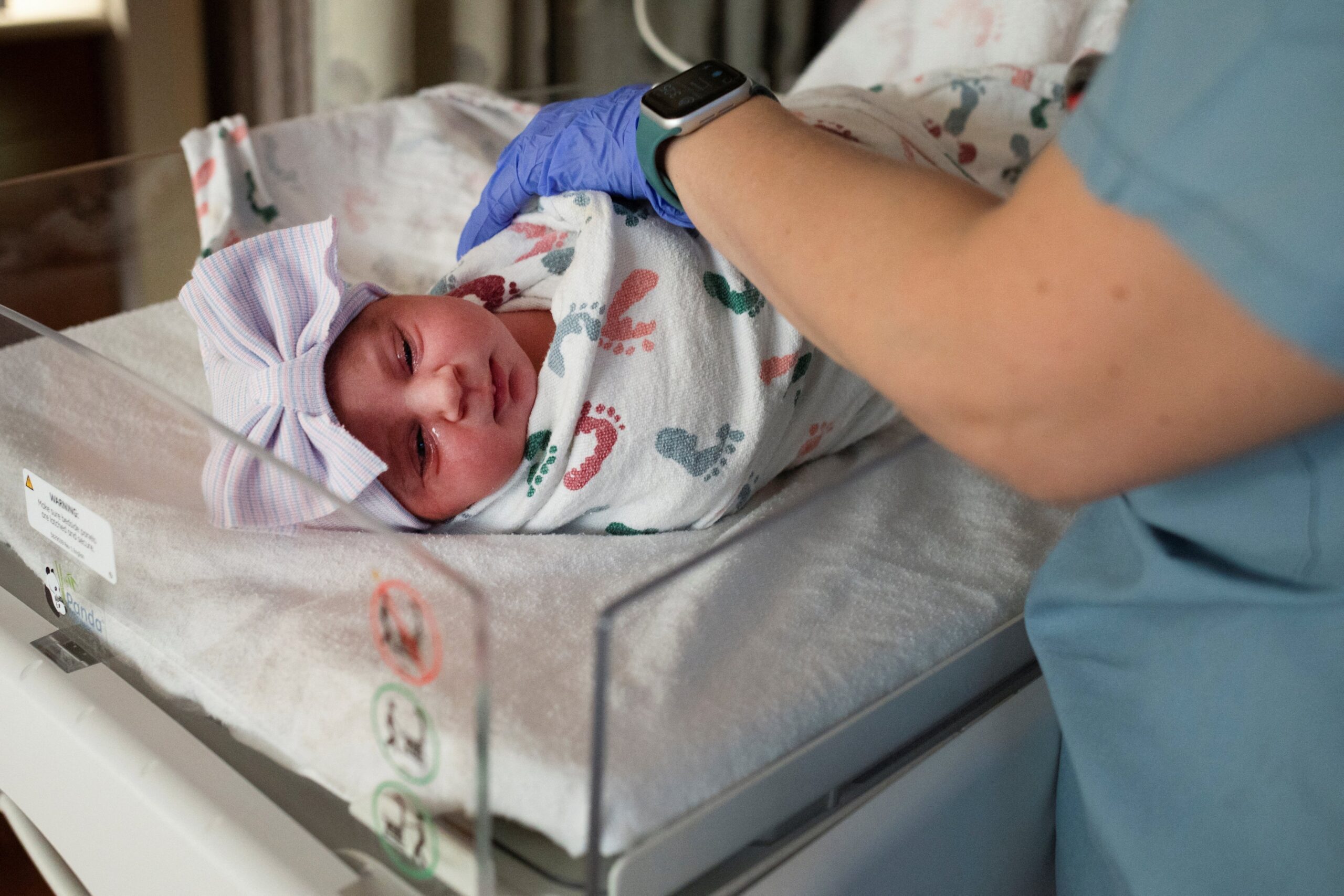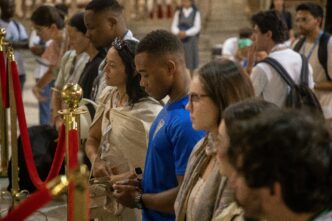To explain the dropping U.S. fertility rate, Catholic fertility and family policy experts are pointing to marriage.
“One of the biggest drivers of the American fertility drop is the decline of marriage,” Leah Libresco Sargeant, who has written about family policy and is the author of several books, including an upcoming book called “The Dignity of Dependence: A Feminist Manifesto,” told OSV News in emailed comments.
Experts say marriage decline drives fertility drop
“Married fertility has declined somewhat, but it’s much more stable and much higher than unmarried fertility,” she added. “If people were getting married more often (and earlier) fertility would be a lot higher.”
She and other experts spoke about the U.S. fertility rate and how the Catholic Church should respond after a new report from the Centers for Disease Control and Prevention’s National Center for Health Statistics found that the rate dropped to a record low in 2024. The federal agency reported 53.8 births per 1,000 women ages 15 to 44 in 2024, a 1% decrease from 2023. That number translates to less than 1.6 children per woman, which falls below the 2.1 children per woman needed to maintain the national population without immigration.
The report also found the decline part of a larger trend: From 2007 to 2024, the fertility rate has decreased 22%.
“Political polarization between the sexes, the falling fortunes of men, and the digital revolution’s degradation of social skills and dating opportunities among young adults have made it more difficult for today’s young adults to mate, marry and have children,” Brad Wilcox, pointing to multiple factors, told OSV News in emailed comments.
Wilcox is a professor of sociology and director of the National Marriage Project at the University of Virginia and the Future of Freedom Fellow at the Institute for Family Studies.
Like Libresco Sargeant, Patrick T. Brown, a fellow at the Ethics and Public Policy Center, tied the issue to marriage and called declining fertility rates a global issue.
“There’s so many factors that go into it, but the biggest one is the decline in marriage, decline in stable partnerships,” he said. “Particularly here in the U.S., where the biggest decline in fertility since the Great Recession — essentially 2007 or so — has been almost a 25% drop in birth rates among unmarried women.”
If people marry, he said, they’re still likely to have kids.
“In some respects, it’s a half-cheer victory for people who were concerned about rising out-of-wedlock births for much of the 20th century,” he said. “But it’s not that people are getting married and having kids, they’re just not having kids at all.”
Unmarried births fall — but so do births overall
According to a report released by the U.S. Census Bureau in 2024, married-couple households made up an estimated 47% of all households in 2022, a significant decrease from 71% in 1970.
Brown identified the biggest factor driving declining fertility for both married and unmarried women as the “rising opportunity cost” — or what women have to sacrifice in order to have a child, such as educational or workplace opportunities.
Libresco Sargeant also focused on opportunity cost.
“As we become a more prosperous society, the opportunity cost of having kids (or an additional kid) goes up!” she said. “It’s more time away from work (where women command higher wages than they used to) and less disposable income for both parents to consume food, performances, travel, etc., when the range of things you can do has never been wider.”
“I’m not rooting for us to become a poorer, narrower society to raise the fertility rate,” she added. “But I think it’s worth thinking about how to lessen the hit parents take — that’s why I favor a baby bonus paid out after birth to smooth the income shock parents undergo.”
Other experts addressed factors such as infertility, a common problem in the U.S., according to the CDC. Around 1 in 5 U.S. married women ages 15 to 49 with no prior births struggle with infertility or are unable to get pregnant after one year of trying.
“The long-term social and scientific drivers of infertility have not been studied at a population level,” Anna Halpine, the CEO of FEMM, a comprehensive women’s health program that offers a fertility app, said in emailed comments. “What we do know is how to support women who want to conceive, so that we can optimize their own fertility and health in order to maximize a healthy conception and live birth.”
Catholic Church urged to respond with hope and action
Many experts also shared how the Catholic Church — which emphasizes the importance of family and children to the church and society — should respond to the dropping fertility rate.
“This moment gives new legitimacy to the Catholic Church’s longstanding celebration of marriage and parenthood,” said Wilcox, who is also the author of “Get Married: Why Americans Must Defy the Elites, Forge Strong Families, and Save Civilization.”
“Priests and lay religious leaders should underline the ways in which Catholic teaching speaks to the challenges of our depopulating moment,” he recommended. “They should also seek to find new ways to help young adults socialize and date.”
Libresco Sargeant also wanted the church to take an active role and connect young adults.
“I think the church should do more to help young men and women meet (beyond wine and cheese singles nights) and help shape deliberate dating with an eye to marriage,” she said. “Apps and online dating are much worse than meeting people through your community, but those intrapersonal connections have waned.”
Reaching the working class with the Gospel of marriage
She also encouraged the church to help cohabitating couples discern marriage. She gave the example of a program run by a Protestant church in Texas.
“They cover the cost of a cheap-ish wedding + reception (and also second rent for one partner to move out for six months) to help people afford to tie the knot the right way,” she said. “They also pair young couples with mentor couples. I’d love to see more experiments like this.”
Brown also spoke about encouraging people, including couples who are living together, to recognize the unique benefits of marriage. The church should not only talk about the sacramental reality of marriage but also the cultural and economic benefits of it, he said.
He expressed particular concern over reaching Americans who work blue-collar jobs or have no degree beyond a high school diploma. They’re not getting married, he said.
“It’s hard to know how to reach them because oftentimes they’re the ones who aren’t as active in the church necessarily, especially the men,” he said. “So finding who they’re listening to in the culture and finding ways to kind of explain the beauty of marriage.”
More broadly, he called for restoring “the ability and the appeal of people getting married earlier in life.”
“It’s not just the Catholic Church, it’s not just the U.S., it’s everybody all over the globe figuring out ways to help men and women pair off earlier in life and successfully do so,” he said. “I think that’s a big — perhaps the big — challenge of our time.”








